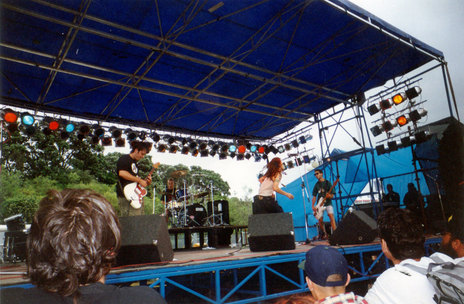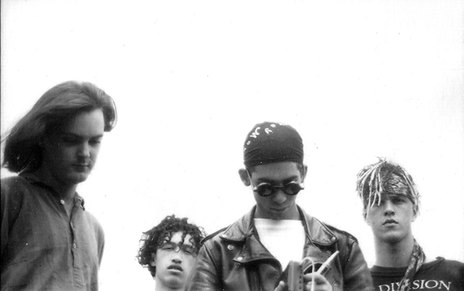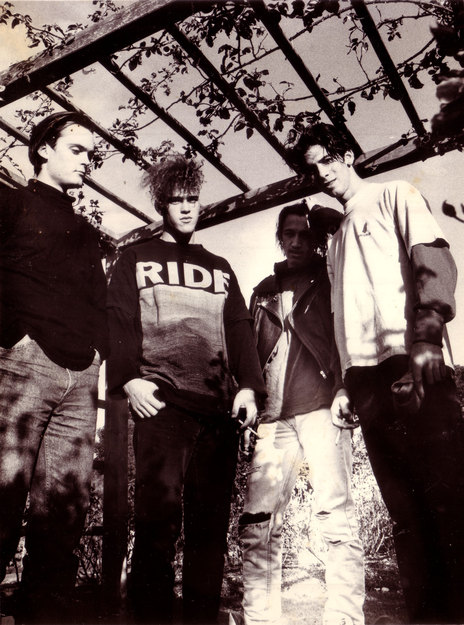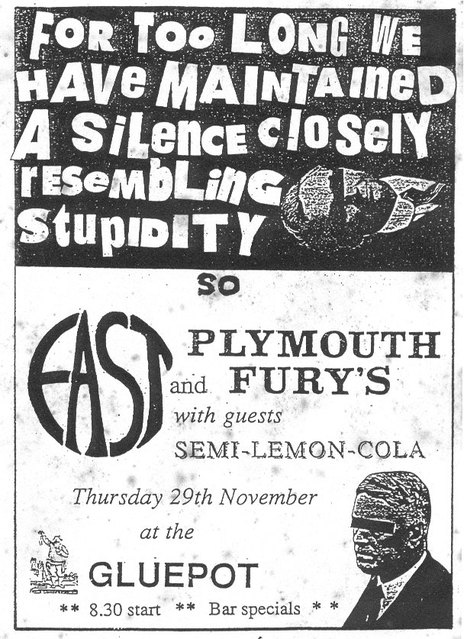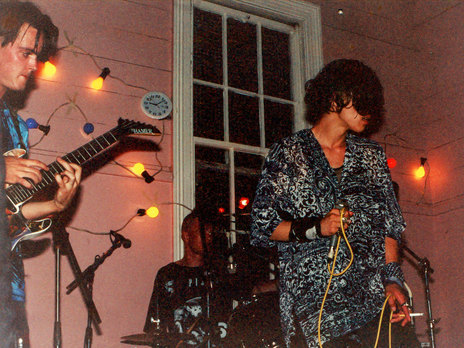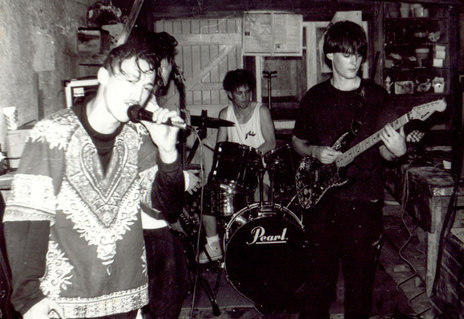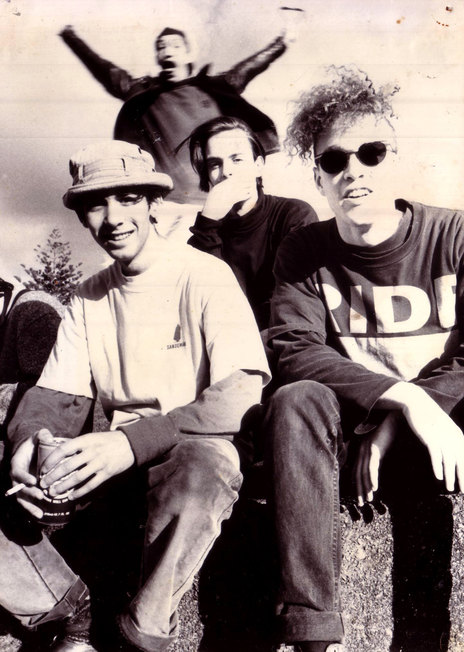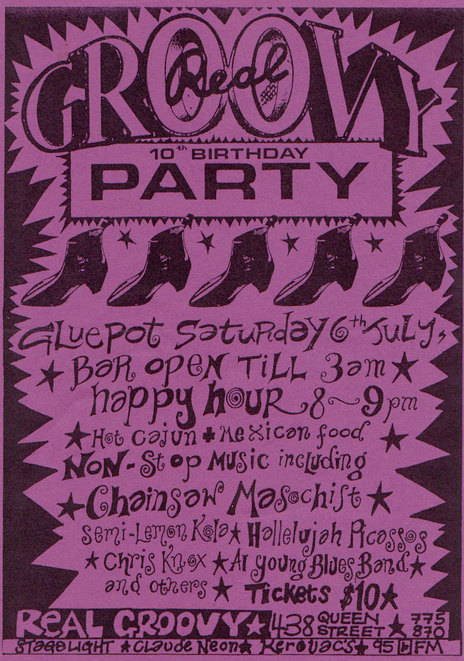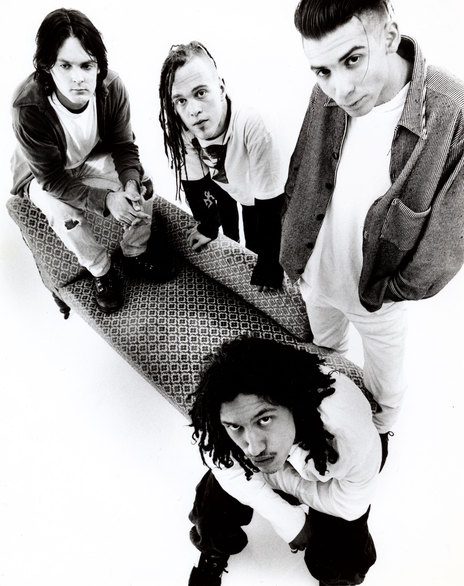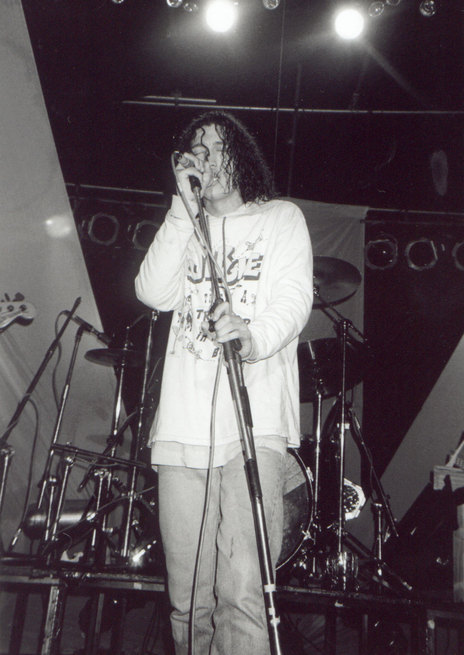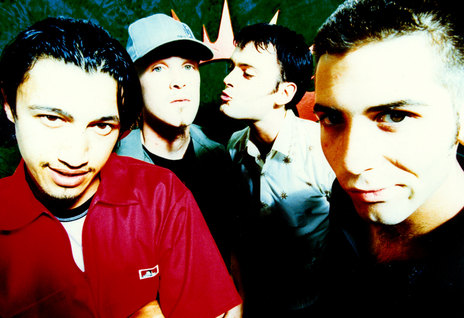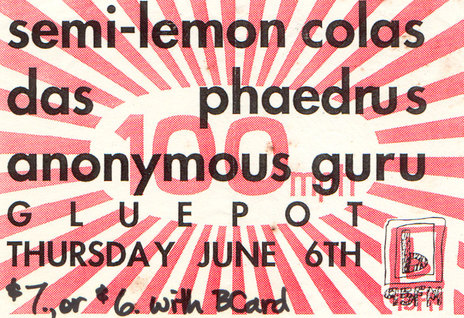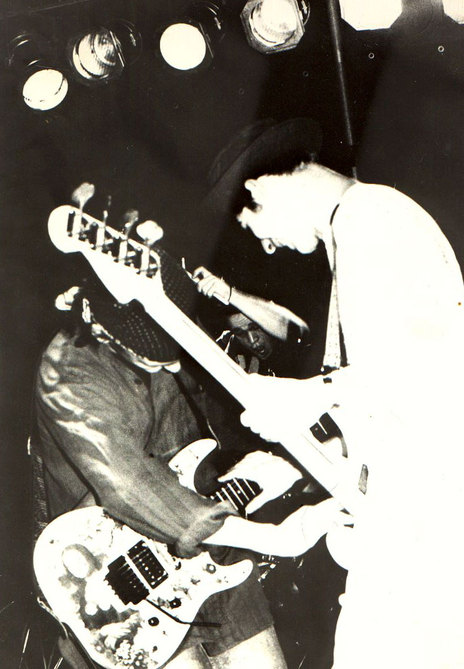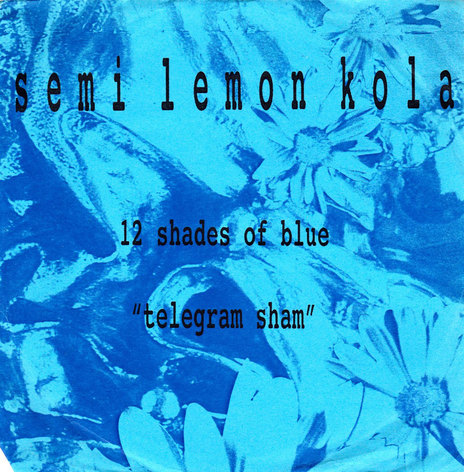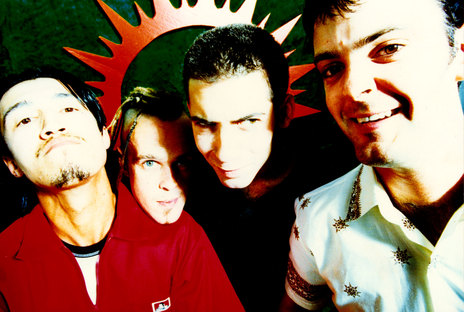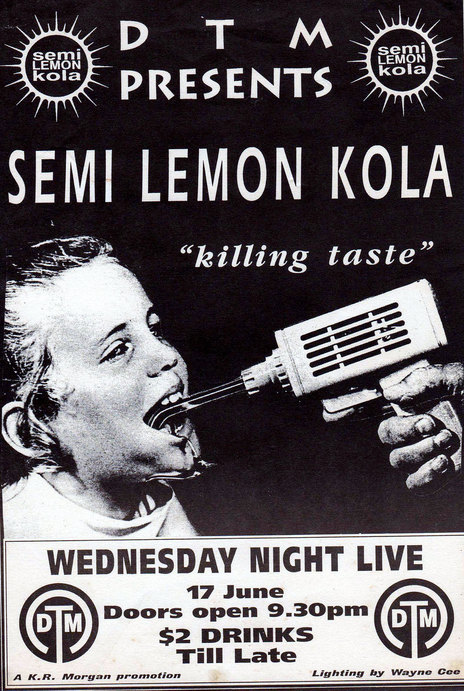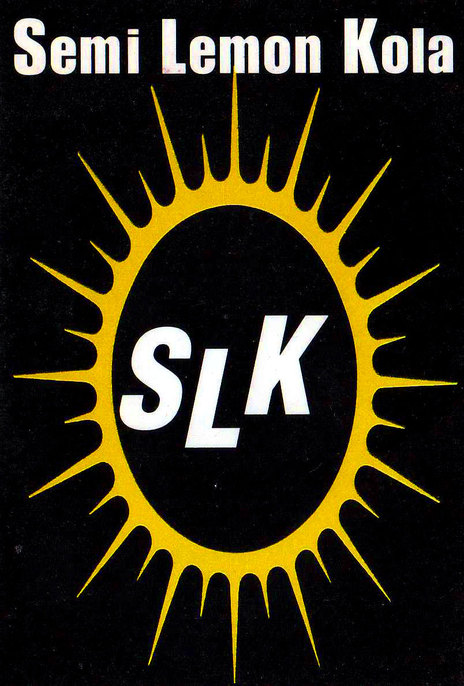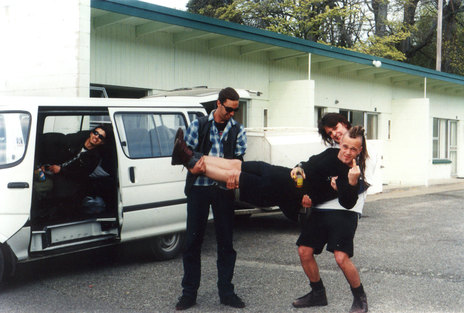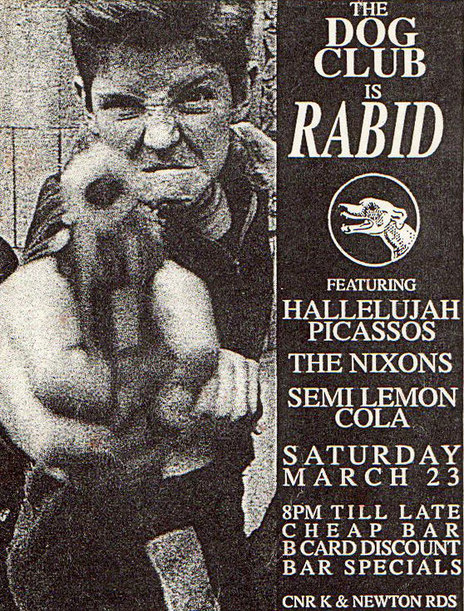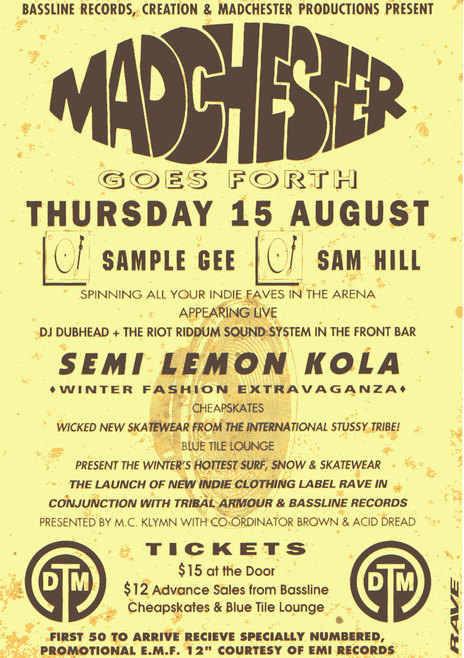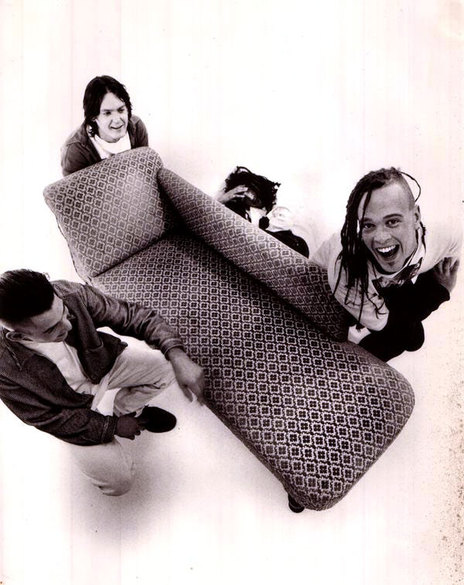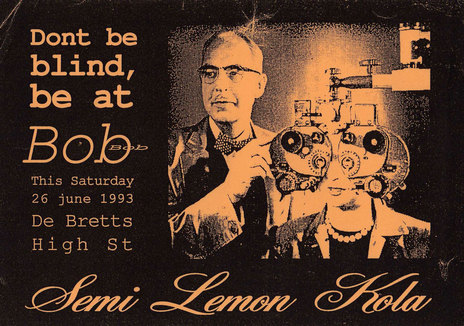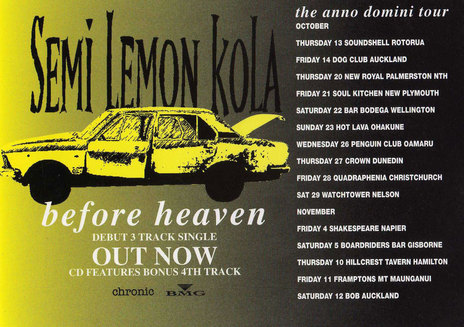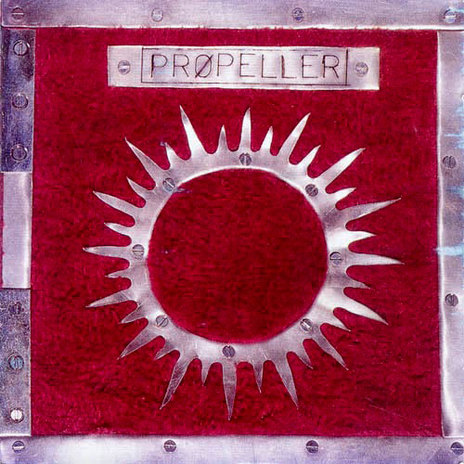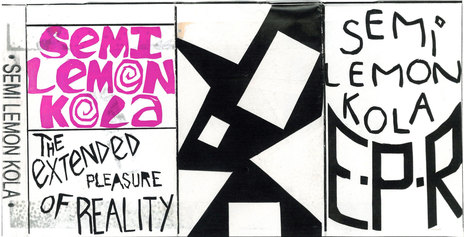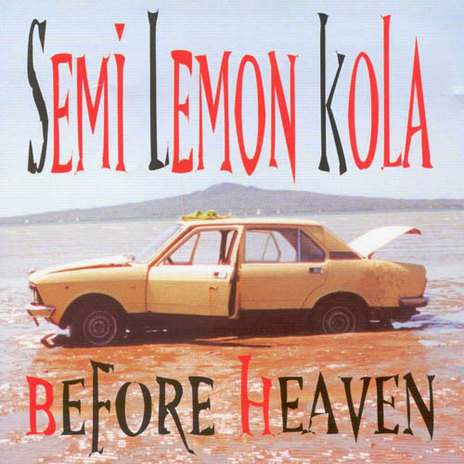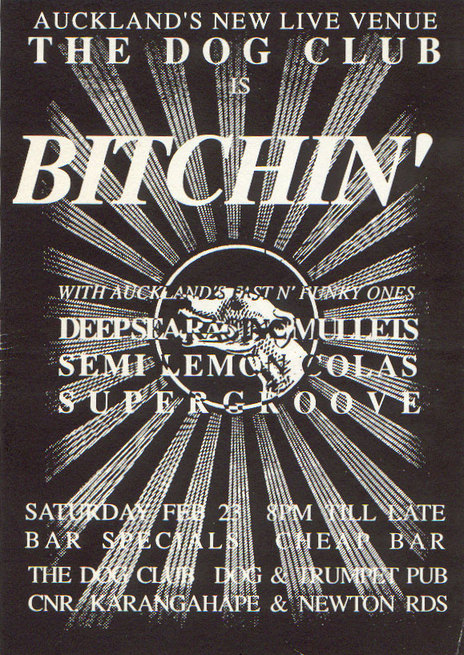Semi Lemon Kola formed in February 1990, though bassist Robert Young remembers that the first sparks of the band started a few months earlier when he first met guitarist, Gareth Price.
“I was playing bass in a school band at Selwyn College around 87. I had a bass from a mate who had borrowed it from The Screaming Meemees' bassist, Peter Van der Fluit. We were doing the de rigueur covers of the day: The Cure, The Cult, The Who, Hendrix, Doors, Prince. I saw Gareth play ‘Sweet Child Of Mine’, note perfect, in the quad at school one day with a three-piece band. The singer had chickened out, so not only did Gareth play it, he sang it too, abysmally. I knew immediately he had to be in my band. He had guts, a great sense of humour, and could play like a motherf*cker even back then. We wrote the first song, ‘Velvet Touch’, in that school band. The school band died, as school bands do. But Gareth and I would still hook up to write tunes.”
Price then met a friend of his neighbours, Deryck Hunt, who’d just begun playing drums. “He was a charismatic young man who could beat the crap out of his drums. It took a while to find Tosh [Graham]. We even auditioned the great Caitlin Smith at one stage, when we were trying to be a bit like The Sundays briefly! Tosh was a friend of Robert’s and he was very intense from the word go. Very passionate and a great voice and stage presence. And a lovely guy!”
The band played their first show at the Gluepot on the 20th November 1990, supporting the Plymouth Furys.
The band played their first show at the Gluepot on the 20th November 1990, supporting the Plymouth Furys. Hunt was hooked from the start.
“I still have visual memory of what it was like to be onstage at the Gluepot – on the drum riser with a light show and foldback. The first show was pretty much the reason for my obsession to continue getting on a stage ever since … Though some of my favourite memories of my time in SLK were the house parties that we played in mid-1990 before we got an actual gig. To this day, setting up in some person’s lounge to make some noise is my favourite kind of gig. We played house shows with some seriously awesome bands back then, like Anonymous Guru, Deep Sea Racing Mullets and Supergroove.”
The indie music coming in from overseas had started to pick up on a dancey, funky vibe, thanks to the Happy Mondays, Stone Roses, and Red Hot Chili Peppers, and the band’s sound seemed particularly timely. Though, Price remembers that his actual inspiration to use a wah-wah pedal came from an older set of influences.
“I came from a classical music background, and really admired musicianship. So when I started guitar I loved all the typical greats – Hendrix, Zeppelin, Pink Floyd etc. Then Living Colour, Steve Vai, and Joe Satriani came along and re-invented the guitar for me! I'll probably get fucking crucified for saying that, but it's true. Sigh. The early wah stuff came from all that. Oh, and Prince. For me, there's him, then all other music … still to this day!”
The wah-wah guitar provided by Price was matched by Hunt’s drumming, which included funky off-beat hits on the snare, and bassist Rob Young was already a deft hand at slap bass. Their youthful energy often pushed this sound into a heavier direction, which was matched by the fiery vocals of singer Tosh Graham – not your typical indie frontman, since he was a young Māori guy with thickly matted hair that was later worked into dreadlocks.
They moved quickly to record their early songs, setting up in the newly constructed Frisbee Studio on Symonds St. Hunt had only bought his first kit less than a year earlier and the band had only been together a short time, but they were unwilling to just settle on recording an EP and instead worked up 10 tracks to create a full album.
The album was recorded by the studio’s two young engineers Bob Frisbee (aka Z-Bob or, on his birth certificate, Bob Mahoney) and Honest Andy, who were happy to cater to the band’s own ideas – such as setting up in the car park next door to capture a natural reverb sound. However, it was a studio that would soon become known more for its association with the garage rock of Shaft, The Rainy Days, Nothing At All!, and The D4, so it possibly wasn’t the most suitable location for a young indie-funk band.
The resulting album, The Extended Pleasure of Reality (1991), showed that the band could craft a good pop hook and already had some skill as musicians.
The resulting album, The Extended Pleasure of Reality (1991), showed that the band could craft a good pop hook and already had some skill as musicians, but the overall sound of each track was rather empty and somewhat watered down when compared to their live show.
While the band could’ve done with more time to play as unit before stepping into a studio, releasing an album so early in their career did have a definite upside – fans had could get to know their music before seeing them live and this was a rarity in the days before digital recording, when many student radio bands performed for years before coming up with the funds to record a full album. This also helped the band gain a strong following amongst underage fans, who also had the chance to see them play at all-ages gigs at Ellen Melville Hall and the Powerstation in Auckland – the most notable of these latter shows being opening slots with hyped UK bands – Jesus Jones in 1991 and Ned’s Atomic Dustbin in 1992.
Semi Lemon Kola gigged regularly throughout 1992 and were a considerably more confident band when they returned to the studio the following year. They had played with Head Like A Hole in late 1991 and, after several tours to Wellington, they’d been inspired by its scene. They decided to record at Writhe Studio in Wellington in 1992, where they tracked the song ‘David’s Mistake’ (later mixed by Nick Roughan from Skeptics). During their first national tour, their live sound was done by David Wernham and so they asked him to help them to record more songs at The Lab in Auckland (along with Matthew Heine from S.P.U.D.). This session produced the bFM top 10 hit, ‘Happy Day’, which later appeared on the Failsafe Records compilation, Good Things (1994).
These two songs were put together with two subsequent tracks and released on the David’s Mistake EP cassette release (1993). The title track showed their willingness to experiment with mixing genres and saw the band delve into reggae, while the radio single ‘Happy Day’ captured the band’s ability to combine a heavy propulsive sound with a catchy pop chorus. That same year, they also released a 7” record – ’12 Shades of Blue’ b/w ‘Telegram Sham’ – pressed at Geraldine pressing plant in the South Island (which was only able to do lathe cuts, rather than true vinyl pressings).
Around this time, the band played a show that would become a highlight for Hunt. “We supported for Fugazi in December 1993 on their In On The Kill Taker Tour. They were my favourite band in the world at that time and opening for them was mind-blowing. We managed to nail a good rocking set of what we were doing at the time and I remember being stoked.”
Over the next two years, the band gradually moved away from their early influences and developed a unique sound of their own.
Over the next two years, the band gradually moved away from their early influences and developed a unique sound of their own. Hunt’s drumbeats gained a thunderous ferocity and Price ditched the wah-wah pedal in favour of an ever expanding arsenal of other guitar effects, often moving from ethereal, synth-y washes of sound through to full-on rock distortion within a single track.
The slap bass playing also went by the wayside, though Young retained the desire to write busy, ever-moving basslines. “At the end of the 80s I’d been digging Bad Brains and the early Chili Peppers albums, hence the slap bass, which in retrospect was ill considered, but hey, fashion blunders were big in the early 90s. I was personally a big fan of James Brown tunes, 60s soul, The Who, New Order, The Cult, Public Image, etc. Probably more a frustrated guitarist than bassist really. We’d been listening to Jane’s Addiction, Fugazi, and lots of reggae at the time so I guess that started seeping through. Big half-time beats, swinging bass, louder guitars and angsty vocals were the go. Tosh around this time had broken up with his girlfriend, Elle, who had been “managing” us. They’d had a kid together. Elle disappeared with the child to Australia with no warning whatsoever to Tosh and that affected him deeply, so the angst in the songs was real.”
Graham agrees that his lyrics were drawn directly from his experience. “The vast majority of the lyrics that I penned were drawn from my emotional state, personal situations and my on-going struggle with bipolar. The Freudian self-investigation of the dark recesses of my personal id was, upon reflection rather self-indulgent, but always met with enthusiasm and empathy from the guys. I always loved it when they offered up their own lyrics, songs like 'You' and '12 Shades of Blue', or their personal situations as subject matter like 'Trapdoor'. I would make great efforts to weave their threads into the fabric of my psyche as seamlessly as I could in order to express their emotions as honestly and emotively as I could in order that they might experience the same feeling of release as I did when delivering my own work.”
By this stage, Young worked at Auckland student radio station bFM and the band were helped by having access to the small recording studio where they could develop their sound by recording early demos of any new tracks that they wrote (often with the assistance of Jules Barnett from Second Child/Thorazine Shuffle). Semi Lemon Kola had toured the country multiple times by this stage and played a number of times at the Dog Club, a venue run by Stuart Broughton, whose management skills had elevated Supergroove to national success. Broughton signed on to manage Semi Lemon Kola and arranged to release them through his own label, Chronic, with distribution through BMG.
This deal meant that the band were able to book Auckland’s Revolver Studio for their next recording and the resulting EP, Before Heaven (1994), marked a turning point for the group, driven by the huge sound of the title track. The opening bars had Price’s guitar playing through pulsating layers of delay, providing a atmospheric opening for a song that soon cranked into something far heavier – the bass moving menacingly through the verses before drums really kicked in, larger and more booming than ever before.
Price believes the track was a particularly fitting encapsulation of their early influences. “It was a mix up between Rob's great dub-influenced bass playing and all the other stuff going around at the time – My Bloody Valentine, Bauhaus, U2, Massive Attack and later the Smashing Pumpkins and other grunge bands that were coming through.”
The EP was produced by Malcolm Smith (from super-successful 80s NZ pop group, The Fan Club) and engineered by Neil Baldock, so the sound was more coherent and professional that their previous releases. ‘Before Heaven’ was paired with a quirky video made by upcoming director, Steve Morrison (who also did breakthrough clips for Bressa Creeting Cake and Thorazine Shuffle around this same time). A couple of years earlier, a clip like this would be consigned to late night music video shows, but the arrival of Max TV meant that it would now reach far more viewers (in Auckland at least). This exposure, along with the band’s previous success on student radio and hard work on the live circuit, led the EP to break into the singles chart – hitting No.37 and hanging around for four weeks.
When they returned to York Street Recording Studios in May 1995, they were at their height as a band.
The next couple of years saw Semi Lemon Kola playing in front of ever larger audiences, gaining slots at the Strawberry Fields festival in 1994, Big Day Out in 1995 and Mountain Rock festival in 1995. When they returned to York Street Recording Studios in May 1995, they were at their height as a band, both in terms of songwriting and the fullness of their sound.
Their next single, ‘Otherwise’, was engineered and mixed by Malcolm Welsford. The song kicked off ferociously before peaking with the almost-yelled intro line: “Sometimes I forget that before you and me, there was that whole other situation...” The release was really a double A-side with an equally strong second track, ‘Henry XXL’. While the band’s earlier experiments with introducing a reggae influence had not been entirely convincing, this time Graham pulled in some elements of ragga toasting into the chorus and it fitted perfectly. He was helped by backing vocals from Harold/Roland Rorschach from the Hallelujah Picassos (Semi Lemon Kola had already signalled their respect for the band on The Extended Pleasure Of Reality, which included a cover of the Picasso’s noise track, ‘Thirty Seconds Of Pure Pleasure’). ‘Henry XXL’ showcased all the elements of Semi Lemon Kola’s sound – energetic vocals, pounding drums, a guitar layered in effects, and busy, upfront basslines.
The individual musicians within Semi Lemon Kola were now finding other options opening up for them. Hunt joined industrial rock outfit Future Stupid, Graham provided vocals for Riot Riddum Sound System, and both Price and Young played in acid jazz group Slakka. Hunt found that his time in Future Stupid had a strong effect on pushing his drumming forward. “Joining Future Stupid was a real challenge for me as they were my favourite local band at the time and Dave Toland (the drummer I replaced) had ten years playing on me and his chops were hard to match. Future Stupid made me realise that you can have more than one iron in the fire and that is a great thing. Joining my favourite band was a rare treat. It made me a better drummer and I've been keen to play with as many different people ever since.”
they now felt that they had outgrown the name, Semi Lemon Kola, which was more representative of the funk-rock band they had been when first starting out.
In 1996, the band finally decided to put these distractions aside and get down to the work of recording an album. However, they now felt that they had outgrown the name, Semi Lemon Kola, which was more representative of the funk-rock band they had been when first starting out as teenagers. Hunt was one member of the band who didn’t agree with the change.
“I was the one of the four of us that right until crunch time was against the idea. We had had six years at that stage playing as Semi Lemon Kola. At the final meeting when we discussed changing the name, I finally just said, ‘It's three against one, go for it.’ Democracy ruled.”
To reiterate the new name, the album was self-titled. Propeller (1997) was recorded at York Street with the assistance of Nick Abbott. Their previous experience in the studio showed across the 10 tracks of the album, with the band never sounding bigger. Surprisingly, the first single actually showed the quieter side of the group – ‘Play Dumb’ was a more poppy effort and, like previous singles, gained great airplay on Max TV and student radio (as did the heavier follow-up radio single, ‘Suva Yacht Club’). It wasn’t enough for the group to see any chart action, but it solidly confirmed their place as one of Auckland’s most popular alternative rock acts.
Soon after the release of the album, the band set off on a national tour, supporting Tool (playing Auckland, Wellington and Christchurch). It was a sure sign of how much tougher their sound had become over the years and the layers of guitar eventually necessitated the addition of a second guitarist, Matt Brown (ex-Shaft). Price now believes they might’ve moved a little too far away from their early approach. “I think we were best when we did the pop/rock mixture. Towards the end we went pretty rock, with mixed results I suppose. Though it’s easy to say that now, with perfect 20/20 hindsight ...”
Rather than sit back after the release of the Propeller album, the group continued to push their sound forward in the studio.
Rather than sit back after the release of the Propeller album, the group continued to push their sound forward in the studio. The Refrain EP (1998) was actually more of a mini-album, with nine tracks of remixes, new tracks and a cover of Gary Numan’s ‘Are Friends Electric?’ (originally recorded at York Street for a bFM live-to-air). What’s more, the closing track of the EP, ‘Tomorrow Night’ was 15 minutes long! The release also had two remixes done by Price (taking the name ‘Dexter’) working at Beaver Studio with Simon Holloway, which was an early sign of his eventual move toward studio work. It was a varied collection that went all the way from drum and bass through to more classic indie rock, meant as a stopgap until another album was recorded the following year. However, this wasn’t to be and it turned out to be their last release.
Deryck was the first to leave, though the band initially tried to continue with Brown moving from second guitar to drums. Price remembers that the impetus had faded from the group. “I remember very well the last practice, or lack thereof. It was on Khyber Pass where the motorcycle shop now is just under the motorway. I met Tosh there and told him that it felt like the end for me, because it was just getting harder and harder to keep motivated to write new material, particularly after Deryck left. Anyway, after waiting about half an hour, Rob and Matt didn't turn up so Tosh drove us to their place, and I announced I was leaving, and no one really batted an eye. Nobody said ‘We can't stop! We still have heaps of cool music to do! Please rethink your decision.’ Or anything like that. Very sad really, but that was it. I went home and had some more beers, and no more band. The end. Great times and so very glad they happened. I still listen to the stuff sometimes, and enjoy it mostly!”
However, Price admits that many of his memories of the band were influenced by how much alcohol he was drinking at the time. “There were fights in vans, me being too drunk to play, flying back to Auckland after being told I was too drunk to be at a bar I was supposed to play in. Gawd. Oops ... So glad and proud of what we got right, because the memories get more precious as time goes by. I was always the geek I think. I remember one time, those other three lowered my guitar strap an inch at a time when I was out of the room at practice so it would look cooler. It took me three weeks to finally notice!”
Graham believes he gained a great deal from his time in the band. “The other band members introduced me to a world of music that might never have been revealed to me, educating my musical palate as they gave an honest critique of music and musicianship. My life is richer because of this. Most importantly, working with a group of gentlemen who were so much more talented than I, being included and regarded as equal, and having the feeling of camaraderie is a treasure that I haven't experienced in my life since. We accomplished many things as a group but for all the experiences I think what I miss the most is simply hanging with the guys and shooting the shit. Pages turn, chapters end and life continues. But the most entertaining read in my book thus far is Semi Lemon Kola.”
After the end of the group, Hunt moved to Melbourne and joined a number of new bands there, including Spider Goat Canyon, Goat Witch, and Daggers Mid Flight. Young moved to Sydney, and meeting up with another ex-pat, Nick Kreisler, played in Lucky Country and The Pet Rocks (releasing an album, Wayward Ways, in 2008). He now plays in psych pop band The Wednesday Night. Sydney was also the new home for Brown (who played with GTO then joined Chris Familton from Thorazine Shuffle in Charlie Horse).
Price remained the most active on the New Zealand music scene, joining rock group, Augustino for a number of years and doing session work at Beaver (including guitar tracks for R&B singer, Sulata, while he was still in Propeller), and more recently has joined the French/New Zealand outfit the Mamaku Project. Graham sang with The Exiles for a period in the early 2000s and works on his own music to this day.
